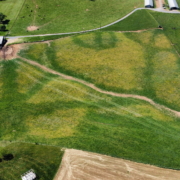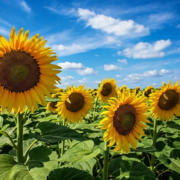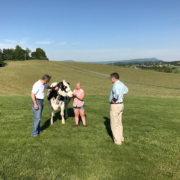Enhancing Precision Agriculture with Drone Technology
# Enhancing Precision Agriculture with Drone Technology
In recent years, the agricultural industry has witnessed a technological revolution with the advent of drones. Precision agriculture, which aims to increase crop yields while minimizing waste, has been significantly enhanced by the integration of drone technology. In this article, we will explore how drones are transforming precision agriculture and the benefits they offer to farmers.
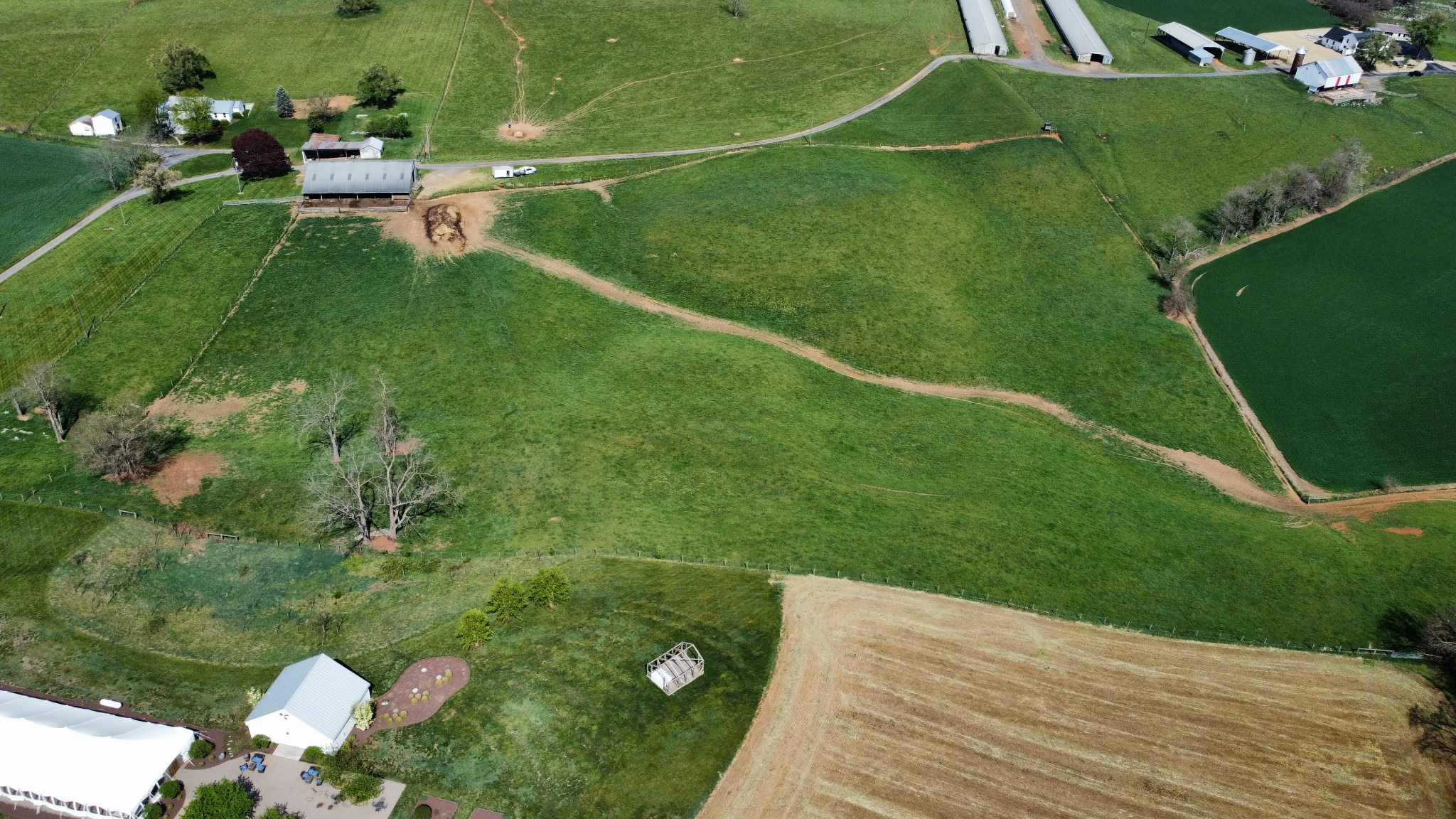
What is Precision Agriculture?
Precision agriculture is a farming management concept that uses technology to observe, measure, and respond to variability in crops. The goal is to optimize returns on inputs while preserving resources. This approach relies heavily on data collection and analysis to make informed decisions about planting, fertilizing, and harvesting.
The Role of Technology
Advancements in technology have made it possible for farmers to collect detailed data about their fields. Sensors, GPS, and data analytics tools have all played a role in this transformation. However, drones have emerged as one of the most powerful tools in precision agriculture.
How Drones are Used in Agriculture
Drones, also known as unmanned aerial vehicles (UAVs), are being used in a variety of ways to enhance farming practices. Here are some of the primary applications of drones in agriculture:
Crop Monitoring
One of the most significant benefits of using drones is their ability to monitor crops. Equipped with high-resolution cameras and sensors, drones can capture detailed images of fields. These images provide valuable insights into crop health, growth patterns, and potential issues such as pest infestations or disease.

Soil and Field Analysis
Before planting, drones can be used to analyze the soil and field conditions. By capturing images and collecting data, drones help farmers assess soil quality, moisture levels, and nutrient content. This information is crucial for determining the best planting strategies.
Planting
Some advanced drones are capable of planting seeds. This method, known as drone planting, involves shooting seed pods into the soil. It is an efficient way to plant in hard-to-reach areas and can significantly reduce planting time and labor costs.
Agricultural Spraying
Drones are also used for spraying crops with fertilizers, pesticides, and herbicides. This method is more precise than traditional spraying methods, reducing chemical usage and minimizing environmental impact. Drones can cover large areas quickly and can be programmed to spray specific sections of a field. In the image below, a drone sprayed our field with herbicide to create large beds for sunflowers while leaving the walking pathways untouched.
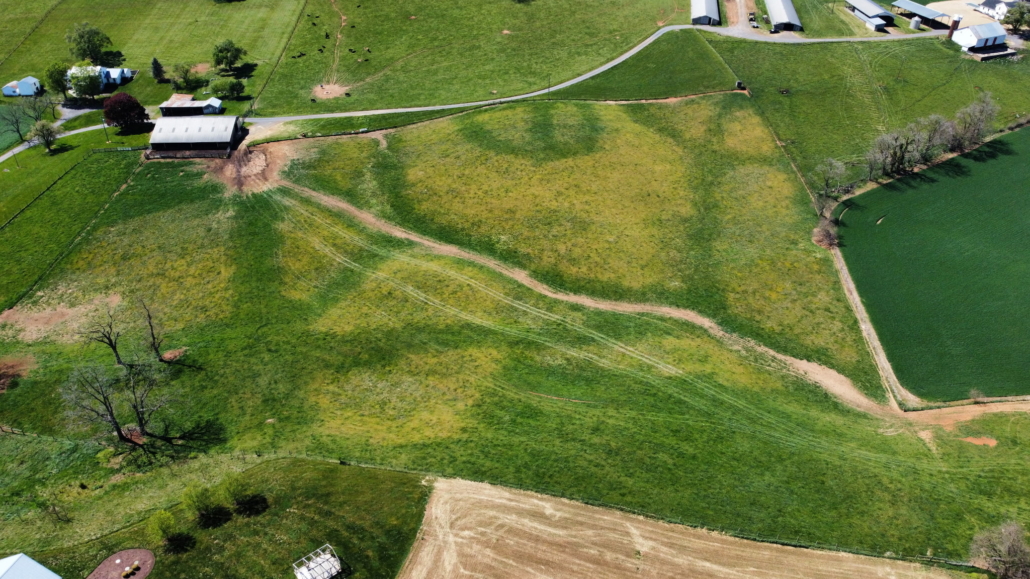
Benefits of Using Drones in Precision Agriculture
The integration of drones into precision agriculture offers numerous benefits to farmers. Here are some of the key advantages:
Increased Efficiency
Drones can cover large areas in a short amount of time, allowing farmers to monitor and manage their fields more efficiently. This increased efficiency can lead to higher crop yields and reduced labor costs.
Cost Savings
By using drones for tasks such as spraying and monitoring, farmers can reduce the amount of chemicals and fertilizers needed, leading to cost savings. Additionally, the ability to quickly identify and address issues can prevent crop losses.
Improved Accuracy
Drones provide precise data and images, allowing farmers to make more informed decisions. This accuracy ensures that resources are used effectively, reducing waste and improving crop quality.
Environmental Benefits
With their ability to precisely target areas for spraying, drones help minimize the environmental impact of farming. Reduced chemical usage leads to less runoff and pollution, contributing to a healthier ecosystem.
Challenges and Considerations
While drones offer many benefits, there are also challenges and considerations to keep in mind:
Regulatory Compliance
Farmers must comply with regulations governing drone use. This includes obtaining necessary permits and ensuring that drones are operated safely and responsibly.
Initial Investment
The cost of purchasing and maintaining drones can be significant. However, the long-term benefits often outweigh the initial investment.
Technical Skills
Operating drones requires a certain level of technical expertise. Farmers may need to invest in training or hire professionals to manage drone operations.
Future of Drones in Agriculture
The future of drones in agriculture is promising. As technology continues to advance, drones are expected to become even more integral to farming practices. Here are some trends to watch for:
Integration with AI and Machine Learning
The integration of artificial intelligence (AI) and machine learning with drones is set to revolutionize precision agriculture. These technologies will enable drones to analyze data in real time, providing farmers with actionable insights.
Expanded Applications
As drone technology evolves, new applications are likely to emerge. This could include more advanced spraying techniques, automated planting, and even livestock monitoring.
Increased Accessibility
As drones become more affordable and user-friendly, more farmers will have access to this technology. This democratization of drone technology will drive widespread adoption and innovation in the agricultural sector.
Driving Sustainable Precision Agriculture with Drone Technology
Drones are transforming precision agriculture by providing farmers with powerful tools to monitor, manage, and optimize their fields. The benefits of increased efficiency, cost savings, and environmental sustainability make drones an invaluable asset in modern farming. As technology continues to advance, the role of drones in agriculture will only grow, paving the way for a more productive and sustainable future in farming.

